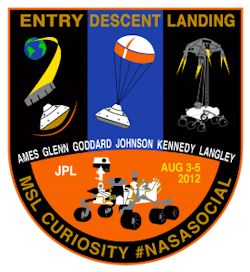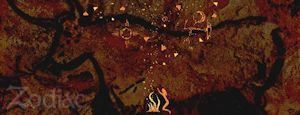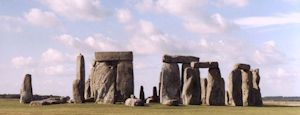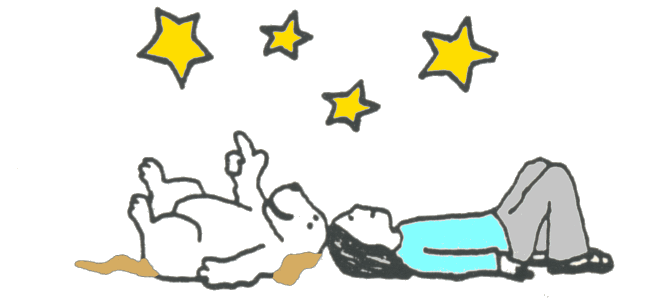
The Ultimate Tweet-up
When NASA tweeted about the JPL social I didn’t even really understand what it meant. I clicked on the link and it became apparent that a rare opportunity was being presented for a handful of people to spend a few days touring JPL and to be on site at the facility during the landing of the Curiosity Rover on Mars. The window of opportunity was short and sudden. But nothing ventured, nothing gained, so I dropped my name in the hat, never really thinking that the odds of being chosen were very high. I was later told that more than 2,400 people applied. Only 25 of us were chosen. I was in shock when I got the notice. I think I was in shock throughout most of the experience. I’m still in shock and it still feels like a dream.
 The premise of a tweet-up is simple enough. A team of enthusiasts relative to a certain event work to provide a stream of live updates via the Internet to social networking sites. Primarily the targets are Twitter, Facebook, Google Plus, and sites on the Blogosphere, and perhaps a few other networks and personal and professional websites. The purpose of the process is to create a general Internet buzz, a trend, to promote a sudden surge of interest from the public at large. And it works. As it turns out, these NASA folks know what they’re doing. It should come as no surprise that they have adopted the tweet-up model to promote awareness of space science and exploration.
The premise of a tweet-up is simple enough. A team of enthusiasts relative to a certain event work to provide a stream of live updates via the Internet to social networking sites. Primarily the targets are Twitter, Facebook, Google Plus, and sites on the Blogosphere, and perhaps a few other networks and personal and professional websites. The purpose of the process is to create a general Internet buzz, a trend, to promote a sudden surge of interest from the public at large. And it works. As it turns out, these NASA folks know what they’re doing. It should come as no surprise that they have adopted the tweet-up model to promote awareness of space science and exploration.

A big part of the excitement is the mindset that you are a real part of a NASA mission, that one is somehow a mission specialist. No matter how much my logical brain tried to remind me of how small of a part I was playing, it didn’t feel small because I was inundated with the enormity of the occasion for one thing. Everything about the adventure was big. But also, our handlers at JPL somehow made me feel important in spite of me gawking with wonder like a country mouse in the city. There was prime seating marked “reserved” just for us. There were very important NASA dignitaries who arranged time to be with us, lots of them. Each one answered as many questions as we could muster and repeatedly dignitaries would gather us around them for a group photo. I can’t emphasize this enough, it was the people, it was the people.

Then there were tours of the labs, and control rooms, and other facilities that one normally only gets glimpses of on the news or in movies. But it is all so different when it is the real thing, when you have sand in your shoes from the Mars Yard.
 The NASA social lasted for three days; Aug 3,4,5 of 2012. It was just enough time to start getting use to the faces, the sights and sounds, to get comfortable in my skin for the big scary event of landing on Mars. And it was indeed kind of scary. A lot of personal emotion was invested in seeing the mission succeed, to not suddenly and tragically end, and JPL was oozing with that fact. Repeatedly meeting and socializing with the people who had spent years of their lives dedicated to the project added my own feelings to that emotional investment. It felt like I was absorbing through osmosis the crescendo of their work and dedication. Thanks to the way we were treated by our hosts, it didn’t just feel like I wanted them to win, it felt like I wanted us to win. In spite of being as small a part as a grain of sand from the Mars Yard, I was being emotionally swept into the fold. This was our moment and we knew we all had a part to play, an exciting job to do.
The NASA social lasted for three days; Aug 3,4,5 of 2012. It was just enough time to start getting use to the faces, the sights and sounds, to get comfortable in my skin for the big scary event of landing on Mars. And it was indeed kind of scary. A lot of personal emotion was invested in seeing the mission succeed, to not suddenly and tragically end, and JPL was oozing with that fact. Repeatedly meeting and socializing with the people who had spent years of their lives dedicated to the project added my own feelings to that emotional investment. It felt like I was absorbing through osmosis the crescendo of their work and dedication. Thanks to the way we were treated by our hosts, it didn’t just feel like I wanted them to win, it felt like I wanted us to win. In spite of being as small a part as a grain of sand from the Mars Yard, I was being emotionally swept into the fold. This was our moment and we knew we all had a part to play, an exciting job to do.

The Real NASA, Humans and Robots
The patient mentorship of our hosts was absolutely amazing. These people are so sincere and so engaging and so skilled. I can’t even articulate adequately how indebted I am for such hospitality. Veronica McGregor, Stephanie Smith, Courtney O’Connor, Jason Townsend, John Yembrick, and the rest of the NASA Social team are simply the best. I guess I always knew that NASA was the best of the best, and these folks fit that mold. They contacted and educated, and helped organize us into a team long before we even arrived. Although we have since scattered back to our lives, the NASA Social specialists have maintained contact and continued to contribute information and encouragement and mentorship.

Clara Ma
 To put a human face on the Mars mission, NASA could not have done better. Clara Ma won the privilege of naming the rover “Curiosity.” Years after winning the essay contest, she stood before us and read it to us from the original copy. During the interim she had been involved throughout the development of the rover, even signing it in the clean room before it was stowed in its cocoon for launch. She was only eleven when she wrote the simple but profound declaration to human exploration and discovery. So during the years leading from visualization to realization she has seemingly doubled in height. As she read the words to us, the video screen behind the lovely young woman showed us a cute little girl. I have more to say about Clara, later, when I describe the big finale, the Entry, Descent, and Landing event (EDL).
To put a human face on the Mars mission, NASA could not have done better. Clara Ma won the privilege of naming the rover “Curiosity.” Years after winning the essay contest, she stood before us and read it to us from the original copy. During the interim she had been involved throughout the development of the rover, even signing it in the clean room before it was stowed in its cocoon for launch. She was only eleven when she wrote the simple but profound declaration to human exploration and discovery. So during the years leading from visualization to realization she has seemingly doubled in height. As she read the words to us, the video screen behind the lovely young woman showed us a cute little girl. I have more to say about Clara, later, when I describe the big finale, the Entry, Descent, and Landing event (EDL).
JPL NEWS, The Media Center
Watching the NASA JPL press conferences on television doesn’t do justice to the media room. There is a full size model of Voyager which is far bigger and intimidating than I would ever have guessed. It lines the wall along one side. Several other models and displays surround the seating. There is a dais along the back for cameras. Masking tape marks out the letters designated the bits of real estate, CNN, NBC, and so forth. When we first entered, the front rows of seating had been replaced with tables reserved for us. As we settled into place, connected our devices to the WiFi, visited the snack table and tapped into the coffee supply, the real dignitaries arrived, the scientists and engineers.

The Mission
I so wish I had spent more time beforehand trying to better familiarize myself with the major players. It’s so much easier to follow Shakespeare when you are familiar with the play. The problem is that the cast is large and the parts they play often overlap each other. Suffice to say they all tended to have long multi-word titles that included “director” and “manager” and “team lead.” They talked about the engineering and they talked about their passion. Machines and people, physics and feelings. This would be the recurring theme throughout our adventure.
 There is one thing I couldn’t help but notice in the initial proceedings. Repeatedly the expectations for successfully landing on Mars were dulled just a bit, qualified and tempered by the inevitable odds of turning theory into practice. Confidence was high, but that meant only a probability of success, and a possibility of disappointment. The risk had been calculated and was being presented. At no point was it ignored or denied. Over and over we heard words to the effect of “We’ve already learned so much” as though to gather and value what return on investment could be had now, before the final tally.
There is one thing I couldn’t help but notice in the initial proceedings. Repeatedly the expectations for successfully landing on Mars were dulled just a bit, qualified and tempered by the inevitable odds of turning theory into practice. Confidence was high, but that meant only a probability of success, and a possibility of disappointment. The risk had been calculated and was being presented. At no point was it ignored or denied. Over and over we heard words to the effect of “We’ve already learned so much” as though to gather and value what return on investment could be had now, before the final tally.
Part 1: Mars Curiosity Landing (meeting NASA)
Part 2: Belly of the Beast (inside JPL)
Part 3: VIP Constellation (stars and mars)
Part 4: Safe on Mars (seven minutes of twitter)













August 31, 2012
Science